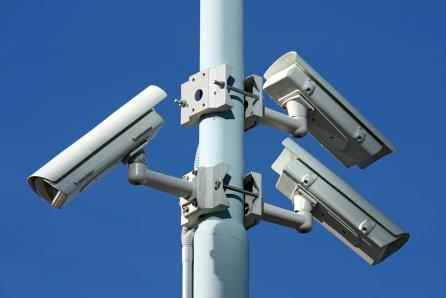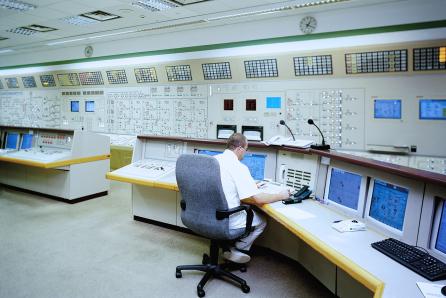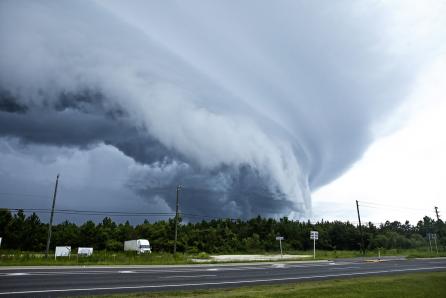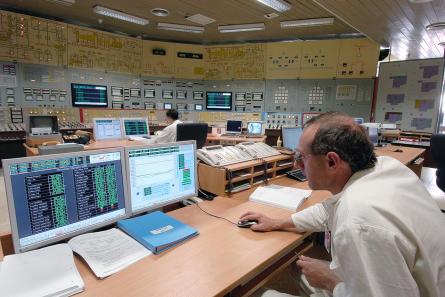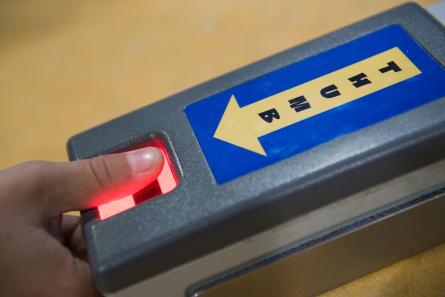
Outside Forces
5 min read
The most important thing for the safe operation of a nuclear facility is the quality and design of its control and safety systems. These systems may minimize the probability of a serious accident. However, power plant operation may be also impacted by outside forces. Such forces are not under the operator’s control, be it either willful or unintentional human action or an act of God, but the operators must be prepared to handle them.
Terrorism
A nuclear power plant is very carefully secured, so that it is very difficult to enter the facility, where terrorists could cause a great deal of damage. The individual sections of a nuclear power plant are very closely observed and monitored. Fingerprint readers and similar security equipment are common in most power plants. To approach the nuclear part of a power plant is almost impossible for unauthorized persons. The no-fly zone established in the vicinity of a power plant protects the plant against an attack from air. The concrete containment that surrounds the reactor and can withstand the impact of an airplane also plays a major role.
All fissionable material is closely watched and checked by experts from the International Atomic Energy Agency, so that possible theft or misuse is prevented.
The Human Factor
The most common cause of accidents in nuclear facilities is the human factor. Modern power plants are designed so that the consequences any possible operator error is eliminated.
Past accidents in nuclear facilities unfortunately suggest that the most frequent cause of accidents is human error, be it either a wrong operator action or a breach of safety regulations, the wrong response to a mechanical malfunction, or an omission simply due to haste. Power plant designers are aware of the danger from the human factor, and modern power plants are constructed in such a way that a wrong or willful operator action is precluded, and so that the power plant is able to correct such an error on its own, without any intervention by electronics, using the inherent safety features.
Great attention is paid to operator training and the operator’s mental fitness. Nuclear power plant operators must understand the physical principles as well as the power plant functions, and must be able to make decisions, immediately and responsibly, in critical and unexpected conditions.
Natural Elements
If a nuclear power plant is located in areas suffering from frequent hurricanes or tornados, its construction must be sufficiently strong and safe, so that it can resist even the worst natural disaster.
An earthquake, a hurricane, a tsunami may damage a nuclear power plant or it could be flooded during floods. In principle, there are two ways to face such risks. The easiest way is to avoid localities where such natural elements occur. That is why power plants are usually built sufficiently far from waterways that might flood the plant, and are placed in seismically calm localities. However, some countries do not have the luxury of choosing such localities, because they are located in seismically active regions or in localities that suffer from frequent hurricanes. Power plants in such countries must be built and secured so that they withstand even the worst possible natural disaster.
Approximately 20% of the nuclear power plants are built in seismically active regions. Such plants are built to withstand, without damage, earthquakes with at least twice the severity of the earthquakes usually occurring in the given locality. Detectors monitor the Earth’s movement and as soon as an earthquake is indicated, the reactor is shut down. The severity of an earthquake is expressed in units of Gal (Galileo units, 1 g = 980 Gal = 9.8 m/s2) expressing the Earth’s vibration under the detector. Power plants are designed specifically for the conditions at the actual locality, but in general, they are built so as to withstand an earthquake 400—600 Gal, while shutdown is initiated at 150—200 Gal.
A power plant built near the sea can be exposed to the danger posed by tsunami. Power plants that use seawater for cooling purposes are built on a seacoast. They are protected by a system of dykes that should prevent a tsunami from entering the facility.
The operators of nuclear power plants must understand all the ongoing physical processes. The operator’s professional competence and mental health are very important.
During the cold war, neither Russia nor the USA intended to attack the other side’s nuclear power plants, because the resulting damage would have been insignificant.



